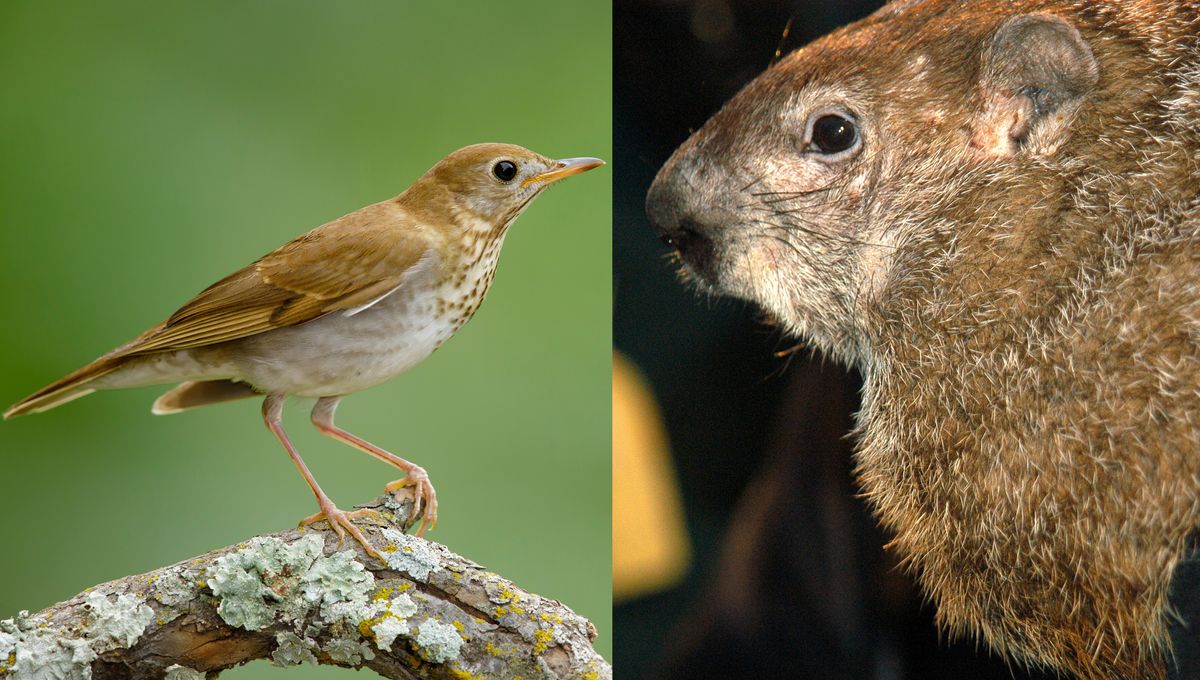
For nearly 140 years, every February 2 in Punxsutawney, Pennsylvania, has seen a bizarre ceremony in which a groundhog named Phil “forecasts” whether or not there’ll be six more weeks of winter. The tradition even has a day named after it – but are there other animals with weather-predicting abilities that deserve attention too?
ADVERTISEMENT GO AD FREE
First, let’s break the bad news – groundhogs aren’t very good meteorologists. While Phil apparently correctly “predicted” an early spring during last year’s Groundhog Day, that’s actually something of an oddity. According to the National Oceanic and Atmospheric Administration (NOAA), the famed woodchuck’s forecasts over the last 10 years have only been right 30 percent of the time.
If we suddenly ended up in a scenario where all of our weather-predicting tech disappeared, we’d probably be a bit stuffed if we relied on Phil as a replacement. Instead, in this hypothetical reality, birds might be a better place to start.
Golden-winged warblers, for example, might be able to sense that a big storm is coming. In 2014, researchers who’d been tracking the birds in the Tennessee mountains discovered that they had flown away from their breeding grounds outside of the usual migration season – two days before the arrival of a deadly storm system that spawned 84 tornadoes.
“We know that birds can alter their route to avoid things during regular migration, but it hadn’t been shown until our study that they would leave once the migration is over and they’d established their breeding territory to escape severe weather,” team lead Henry Streby said at the time. “The warblers in our study flew at least 1,500 kilometers (932 miles) total to avoid a severe weather system. They then came right back home after the storm passed.”
The team suspects that the birds were able to hear the infrasound – that’s sound with a wave frequency below 20 Hertz, which humans can’t hear – generated by the storm system and took that as a sign to get the hell out.
Perhaps even more impressive is the veery, a small species of North American thrush whose breeding behavior appears to be a predictor of the intensity of the Atlantic hurricane season.
ADVERTISEMENT GO AD FREE
In 2019, ornithologist Christopher Heckscher conducted an analysis that found in years where the hurricane season had been milder, the veeries’ breeding season had been longer. Conversely, the season was shorter when the hurricane season was more intense.
In fact, Heckscher’s study found that the birds’ egg laying and eventual clutch size in May and June “showed stronger correlations with subsequent hurricanes than early season (prior to August) meteorological predictions widely publicized by CSU, NOAA, and TSR”.
Quite how the veery does this is unclear. “Whatever it is, they know by mid-May,” the ornithologist told Audubon Magazine. “It sounds out there, but then again if you think about it, it makes sense these birds would take advantage of anything they could across their evolutionary history to avoid hurricanes.”
Sorry Phil, I think we’ll be looking to the birds for our weather forecast from now on.
Source Link: Move Over, Punxsutawney Phil: These Birds Can “Predict” The Weather Too